- Home
- Scott Nicholson
Bad Stacks Story Collection Box Set Page 10
Bad Stacks Story Collection Box Set Read online
Page 10
In the vision were various people. Leo didn’t know who they were or why they were in his painting, and he didn’t care. They were part of the vision, and that’s all that mattered. He painted them all. At one point, an old man in his painting seemed to be smirking. Leo cross-checked the image burning in his mind. Something seemed off. Indeed, there was no smirk in the vision. So Leo touched the old man’s lips with his fine brush, and a few strokes later the old man’s smirk turned into a devilish grin.
In the bucket below, Leo’s blood reached the one-inch mark.
His wound tried to scab over again and again. And each time Leo flicked away the pathetic scab. His body, perhaps sensing that something very bad was about to happen, seemed to be doing all it could to save Leo’s life. Leo was tempted to cut his arm deeper, to draw even more blood so that the flow would be too great to scab over, but he resisted. More blood emptying from his body would cut his life shorter.
And then he wouldn’t finish the painting.
Faces now crowded his painting. They seemed to reach down through the ages. All were dressed in different styles and wardrobes, and Leo thought he might have recognized some of them, but he wasn’t sure. His knowledge of history was really quite scant. He spent his time painting, after all. Not reading history books.
Dinnertime came and went and Leo bled alone with his masterpiece. The phone rang several times throughout the day, but he ignored it. He heard his cell phone vibrating in the next room, as text after text were received—probably from a very concerned and worried Lawrence. Leo left the messages unread.
Blood in the bucket was now at the four-inch mark. A child of five would have had trouble lifting the bucket.
At the five-inch mark, Leo’s whole body began shaking—everything, that is, but his painting hand, which he held steady. He always managed to hold his painting hand steady.
And, later, when the vision suddenly blurred, Leo looked immediately at the gash in his left arm, assuming the wound had congealed over again. But it hadn’t. Indeed, the blood was still dribbling freely, although with less reckless abandon.
What was this?
The visions had only blurred when his flowing blood had been staunched—or when the painting was complete. Neither was the case here. Leo paused briefly and closed his eyes and relaxed his tired lids. Maybe he needed a break. Already he had painted longer and harder than he had for any of his previous paintings.
A moment later, he opened his eyes and the vision was mercifully still there, stronger than ever. Leo smiled. He resumed painting. He just needed to rest.
An hour later, as an exhausted Leo compared the vision to his painting, he saw with elation that the painting was nearly complete.
Nearly.
Still, the apple tree off to the left of the young man in the painting was in sad shape. Leo spent a half an hour on the tree, adding minute changes here and there. And as he was about to add a touch of gator green to some background leaves, his painting hand hand finally began shaking.
Shit.
Never before had he reached the point where his painting hand shook. And as it shook, a voice inside him protested this madness. But not loudly enough. Mostly, the voice was tired and wanted to sleep. A long, long sleep. The big sleep. Still, it begged him to please, please, please look into the bucket, to please look at what he was doing to himself.
So Leo did just that. He forced himself to pause long enough to glance into the mop bucket. It was seven inches full of his precious hemoglobin. If dumped into a bathtub, it would spread over the entire surface and take a minute or two to drain.
I’m killing myself.
Leo closed his eyes and told himself to finish the painting another day; after all, the painting was nearly complete. As it stood now, it was still a masterpiece.
But it’s not finished.
If Leo stopped, the vision would be gone, and the fine details would be lost. In particular, there was one last face to fill in. That of a young man, standing among the other, older men.
The pause did Leo good. His right hand had stopped twitching, albeit briefly, and so he raised the brush, ignored the voice protesting faintly in the back of his skull, and dabbed some color from the palette and proceeded to add the details of the young man’s face. The face looked achingly familiar, but Leo was in no condition to plumb his memory for the reason why.
He continued with the face and, once done, he touched up the rest of the painting here and there, sharpening images, enhancing colors, perfecting his vision.
And then he was done. Or so he thought.
As his heart beat so softly that he wondered if it was beating at all, dark fingers reached from behind his head and slowly covered his eyes. His painting hand dropped to the floor; Leo’s head tilted to one side, and he closed his eyes. Blood still trickled slowly into the bucket.
But the demon muse that lived within him was not done with him. No, not by a long shot. It shone a burning spotlight into his nearly unconscious brain.
It’s still incomplete, said the voice. You’re not done! Wake up! Wake up! You cannot die now with the painting still incomplete!
And with a force of will that surprised even him—for Leo was always one who loved sleep more than life itself—the young painter managed to stir himself awake. He cracked open his heavy eyes and lifted his alabaster white face toward the magnificent painting before him. He spotted immediately what needed to be done. A fallen leaf was missing. A leaf, and no more. And it needed to be placed on the dirt path that led to the jeweled city shining gloriously in the far distance.
And so Leo raised his arm, lifted the tip of the brush to the palette, found the colors he needed, and moved the tip over to the canvas. He flicked his wrist once, twice, and the perfect leaf appeared on the path, gleaming wetly.
But, alas, Leo knew that he was still not done. The devil muse would not let him off that easily. Oh, no. The painting needed one last touch. One last personal touch. Leo finally understood.
He commanded the fingers of his cold left hand to work. They ignored him at first, but finally jerked once, then twice. A corpse awakening. Now he commanded his fingers to grip the edge of the nearly full bucket. They did so, albeit clumsily.
Leo stood on shaky legs. Darkness attacked him, like a massive black wave rising up before him. He fought through it. As he stood, lifting the bucket of blood, the painting before him seemed to recede rapidly. To Leo, it now looked like a tiny stamp at the far end of a long, black tunnel.
With his last remaining strength, Leo heaved the contents of the bucket onto his painting. A crimson wave of death slammed into the canvas, knocked it over.
Leo lost his balance and fell. The bucket landed on top of him, and the remaining blood spilled out from it and covered his face and mouth and drowned what little breath remained in him.
Leo slept forever.
* * *
In contemporary art history books one might find a sentence or two, perhaps even a whole paragraph, on Leo Dershowitz. In one such textbook, after commenting on Leo’s contribution to contemporary art, it finished with this: “Leo Dershowitz committed suicide soon after creating, arguably, his greatest work, a macabre vision of what many believe to be the afterlife. Populating the piece are many of history’s greatest artists, in which Leo, perhaps egotistically, included himself. In the painting, Leo can be found walking along a wooded, tree-lined path toward a jeweled city in the far distance, a city that many believe to be Heaven. The painting, amazingly, was doused with Leo’s own life blood, perhaps a statement of the price of art, of the sacrifice of art, and of one man’s devotion to his craft.”
THE END
Return to Ashes Table of Contents
Return to Master Table of Contents
###
AFTERWORD: FROM THE ASHES
Looking back over old work is like looking at photographs: you see that younger, more innocent, and more foolish version of yourself and wonder how you ever got this far, and how you never re
ally understood much of what was shaping your life at the time.
Writers love their own words. They have to. They spend much of their time isolated, hunched over a keyboard, squinting at a screen until their eyes burn and their spines scream and their wrists stiffen in protest. And all they have to show for the sacrifice is a scattering of glyphs that sometimes seems to have no meaning in any language. To then assume that barrage of symbols will take on a comprehensive narrative and satisfying arc is truly an act of arrogance.
But writers go one step further–we expect people to not only read the words, to not only piece them together into a coherent story, but we demand adoration for our act. And, occasionally, a little bit of cold coin.
The only time I will voluntarily reread an old story is when I am revising it or proofing it for a book like the one you hold in your hands. Because my first instinct is to correct all the flaws that are now so obvious to the wiser and more battle-scarred version of myself, and the second is to cringe and fling the offensive prose into the recycling heap. Sure, there was youthful vigor aplenty in the tales, a little brashness and vanity, and a barely hidden glee in the process of stacking words as if they were a child’s alphabet blocks. But just as the parent must come in and clean up what the petulant child has kicked over, the writer must look at his older work with nothing less than total dismay.
There is one saving grace, though. These stories saved my life and helped me reach this little scenic turnout in the journey.
I wrote most of these stories when I was struggling with alcoholism, depression, fatherhood, divorce, selfishness, fear, and other personal trauma, all of it self-inflicted. And all I could do was scream onto the page in much the same way pre-morphine amputees screamed into the pillows in the field hospitals of bygone wars. Hear me, don’t hear me.
As a result we have this collection as documentation of that period of my life when I could easily have gone the other way–into the darkness and despair that I so often ridicule others for embracing as poseur stage costume. Perhaps there’s a lesson in the cumulative pile of burnt offerings, but that old photograph is as much gray as it is black and white.
So here’s a little color commentary to flesh out the fantasy.
Homecoming-I don’t know how many different versions of this story I’ve written. It began in a college writing class and was almost universally panned by my fellow students. I knew something was in there, though, something that kept calling me back. I still remember my instructor Jade Hyunh’s words: “You write with feeling. I say go for it.”
The story was originally published in 1998 in Maelstrom, a tiny fold-and-staple publication. After the story was published, I found a much longer version in a drawer. Good. Charlie is a man of few words, anyhow.
Haunted-Written in the summer of 1998, it started with the idea of “What of ghosts are themselves haunted by the living?” It appeared in the anthology More Monsters From Memphis, was first runner-up for the Darrell Award, and received an Honorable Mention in Year’s Best Fantasy & Horror.
The Christening—This story appeared in the summer of 2008 at WrongWorld, a short-lived publisher who was attempting to sell fiction via compact disc. Probably about eight years too late, and even then, the CD market for fiction would never have been cool because of all the fuss you have to go through. Another “haunted pregnancy” story. You think pregnancy does weird things to a woman, try being a man sometimes . . .
She Climbs A Winding Stair– This story spun itself from an image of a ghost woman looking out on the sea, waiting and waiting for her seafaring love. I’d done some research on Portsmouth Island off the North Carolina coast, which was abandoned with buildings intact and is now a part of the National Park system. Ghost towns aren’t necessarily limited to the Old West. Originally published in The Book of Dark Wisdom #9.
Must See To Appreciate— It’s hard to come up with a new twist on the haunted-house story, so I decided to throw in the twist right from the beginning and make the tone a little humorous and sardonic. Possession works both ways. Appeared in Black Static #2.
The Three-Dollar Corpse— This story marked a couple of milestones for me, selling on its first trip through the mail to the Dead Promises anthology. I’d read a number of personal accounts of the Andersonville prison camp in the Civil War, and those haunting, resonant details brought the story to life.
The title comes from the practice of soldiers selling the right to carry bodies out of the camp for burial, because getting outside the gates allowed one to trade or buy enough goods to survive until the next day’s funeral procession.
The Bleeder- J.R. Rain. I’ve collaborated on four books with J.R. Rain, author of the immensely popular Vampire for Hire series. J.R.’s generosity and imagination have been true blessings in my life, and I am honored to include one of his stories here. You can learn more about him at www.jrrain.com.
Thanks for scattering my ashes in the wind, and for helping my whispers linger. In many ways, my spirit is a phoenix risen from these ashes and I look forward to sharing many more adventures and tales with you. God willing and the Tao being receptive, I will. I am. We are. It is.
THE END
Return to Ashes Table of Contents
Return to Master Table of Contents
###
AMERICAN HORROR:
A Story Collection
Edited By Scott Nicholson
Copyright ©2011 by Scott Nicholson
Stories copyright individual owners
Published by Haunted Computer Books
Scott’s Amazon Author Central page
Master Table of Contents
American Horror Table of Contents
Introduction: The Last American Horror Writer by Scott Nicholson
1. EL CAZADOR by Lisa Morton
2. THE MAN IN BLACK by Nate Kenyon
3. STARVATION ARMY by Joe McKinney
4. BOY IN THE CABINET by Jeremy C. Shipp
5. DOWN AMONG THE BOSNIAN DEAD by Joseph Nassise
6. OUTSIDE by Kealan Patrick Burke
7. THE SUNSEEKER by Simon Wood
8. THOUGH THY LIPS BE PALE by Maria Alexander
About the Author
Other Books by Scott Nicholson
Scott’s Amazon US Links
Scott’s Amazon UK links
Scott’s Amazon Author Central page
Return to Master Table of Contents
THE LAST AMERICAN HORROR WRITER
By Scott Nicholson
I am a horror writer.
The last of a dying breed.
Actually, perhaps I’m already dead and just don’t know it yet.
I didn’t intend to be a horror writer, and if I’d had any commercial sense at all, I would have delved into paranormal romance, chick lit, suspense, mystery, and fantasy. All of which I write, by the way, often in the same book, but the word “Horror” is stamped on the spine. At the fork in the publishing road, as Robert Frost wrote, I took the one less traveled by, and all the difference has been made.
Showing up early for a recent signing, I had time to browse the store a little bit, checking out the competition, wading past the pirate and Da Vinci material to reach the fiction section. I looked for the titles of my friends, who are also horror writers. Miraculously, practically overnight, the spines of their books had been changed to read simply “Fiction.”
I was all alone, and that was scarier than any ghost or monster I had ever penned. I’m not vain enough to believe I had suddenly become the standard bearer for a fading genre. No, what had changed was the publishing industry perception of the label. The publishers’ sales teams believe horror doesn’t sell, so they convey this lack of enthusiasm to the bookstores. The bookstore owners don’t order it, and because readers don’t see it on the shelves, they believe horror must no longer be readable.
Horror is many things to many people. Author and anthologist Doug Winter once announced “Horror is an emotion, not a genre.” He said this a decade ago, long aft
er the end of the 1980’s horror boom, when evil dolls, sharp-toothed critters, and decrepit manors adorned dozens of books each month. The genre born with “The Odyssey” and “Grendel,” passed up through “MacBeth” and on to “Frankenstein” and “Dracula,” reached its zenith with “Rosemary’s Baby,” “The Exorcist,” and an extraordinary average guy named Stephen King. Horror was selling like hotcakes, and even when the good times faded, largely due to an avalanche of crappy hackwork, a couple of publishers still maintained horror lines, turning out one or two horror titles a month.
Until a few years ago, when I alone survived, though I was already half dead because my mass-market shelf life was comparable to that of cottage cheese.
Within the horror community, the discussion over the “death of horror” was broken into two separate issues—a belief that “horror elements,” the ghosts, vampires, serial killers, and essential human fears that are the root of good storytelling have expanded and are touching more genres and writers and readers than ever.
Romantic suspense writer Iris Johansen wrote a novel that features a woman who wants to turn people into zombies. Kay Hooper’s bestselling series features psychic special agents. “The Lovely Bones” and “Beloved” are built on supernatural frameworks. One can hardly turn around without being poked by a stake-wielding, scantily-clad woman on a book cover who is drooling over a well-oiled Fabio with fangs. So horror, the emotional effect, seems to be quite popular.
And then there’s “horror,” the label, the market anathema.
The brand that’s no longer in stores, despite the plethora of ghosts, goblins, witches, and vampires that still crowd the shelves. The brand that rarely merits its own bookstore section, and when it does, those shelves contain little more than King, Dean Koontz, and Anne Rice, whose books are all labeled “Fiction.”

 After: The Shock
After: The Shock Revelation: A Post-Apocalyptic Zombie Thriller (Arize Book 2)
Revelation: A Post-Apocalyptic Zombie Thriller (Arize Book 2)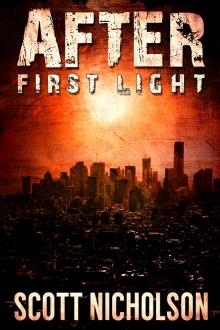 After: First Light
After: First Light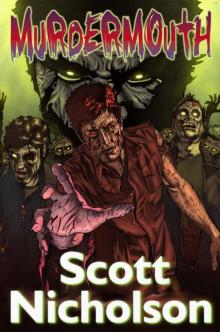 Murdermouth: Zombie Bits
Murdermouth: Zombie Bits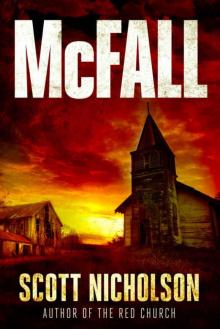 McFall
McFall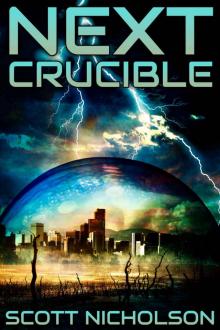 Crucible: A Post-Apocalyptic Thriller (Next Book 5)
Crucible: A Post-Apocalyptic Thriller (Next Book 5)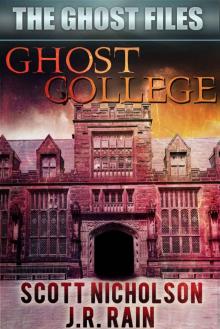 Ghost College (The Ghost Files Book 1)
Ghost College (The Ghost Files Book 1)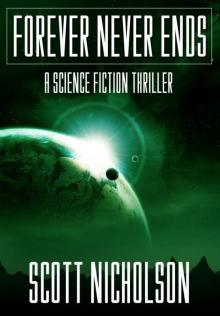 Forever never ends
Forever never ends The Manor
The Manor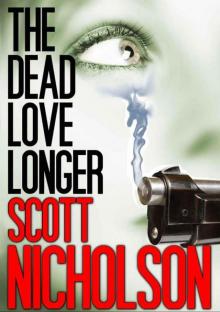 The Dead Love Longer: A Novella
The Dead Love Longer: A Novella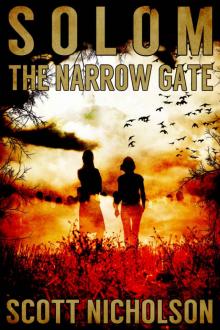 The Narrow Gate: A Supernatural Thriller (Solom Book 2)
The Narrow Gate: A Supernatural Thriller (Solom Book 2) Littlefield: Two Supernatural Thrillers
Littlefield: Two Supernatural Thrillers Scott Nicholson Library Vol 2
Scott Nicholson Library Vol 2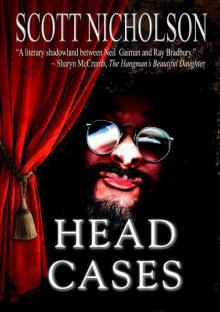 Head cases
Head cases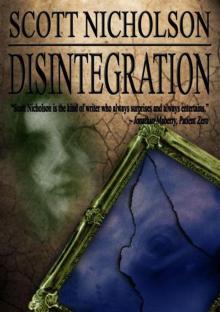 Disintegration
Disintegration Directive 17: A Post-Apocalyptic Thriller (Next Book 4)
Directive 17: A Post-Apocalyptic Thriller (Next Book 4)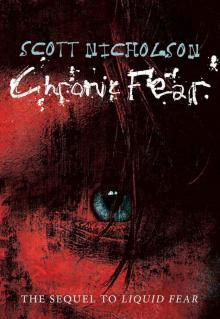 Chronic fear f-2
Chronic fear f-2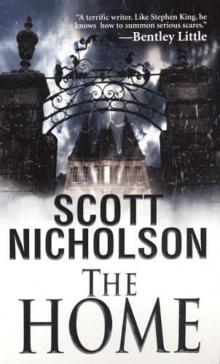 The Home
The Home Radiophobia: A Post-Apocalyptic Thriller (Next Book 3)
Radiophobia: A Post-Apocalyptic Thriller (Next Book 3)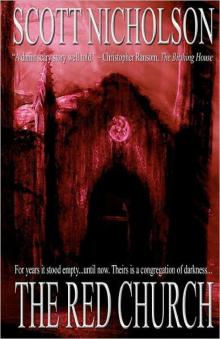 The Red Church
The Red Church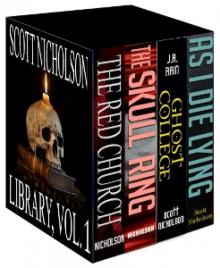 Scott Nicholson Library Vol 1
Scott Nicholson Library Vol 1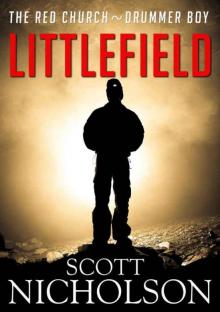 Littlefield
Littlefield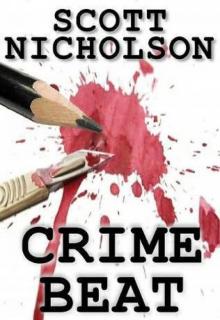 Crime Beat
Crime Beat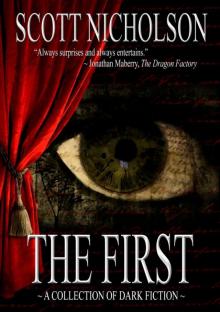 The First
The First Earth Zero: A Post-Apocalyptic Thriller (Next Book 2)
Earth Zero: A Post-Apocalyptic Thriller (Next Book 2)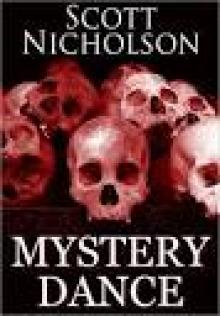 Mystery Dance: Three Novels
Mystery Dance: Three Novels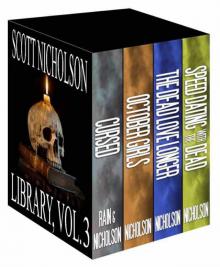 Scott Nicholson Library Vol 3
Scott Nicholson Library Vol 3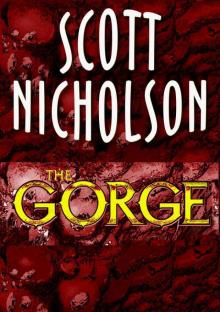 The Gorge
The Gorge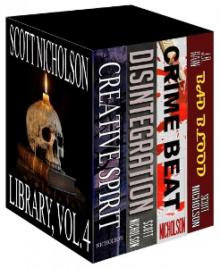 Scott Nicholson Library, Vol. 4 (Boxed Set)
Scott Nicholson Library, Vol. 4 (Boxed Set)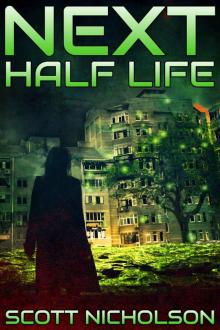 Half Life: A Post-Apocalyptic Thriller (Next Book 6)
Half Life: A Post-Apocalyptic Thriller (Next Book 6) As I Die Lying
As I Die Lying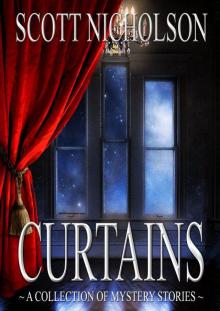 Curtains
Curtains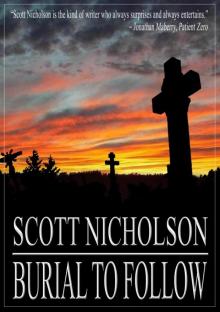 Burial to follow
Burial to follow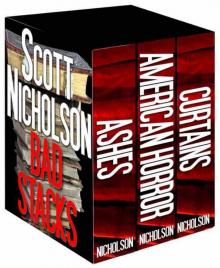 Bad Stacks Story Collection Box Set
Bad Stacks Story Collection Box Set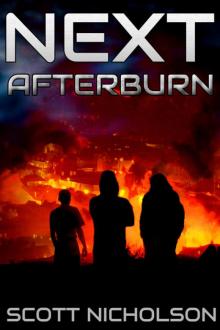 Afterburn: A Post-Apocalyptic Thriller (Next Book 1)
Afterburn: A Post-Apocalyptic Thriller (Next Book 1)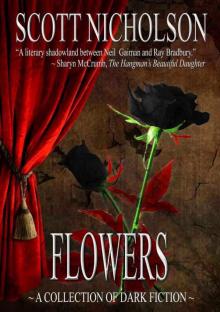 Flowers
Flowers Mad Stacks: Story Collection Box Set
Mad Stacks: Story Collection Box Set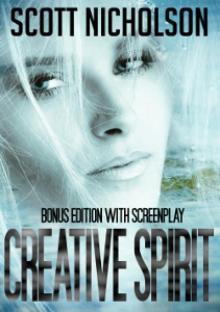 Creative Spirit with Screenplay
Creative Spirit with Screenplay After: Whiteout (AFTER post-apocalyptic series, Book 4)
After: Whiteout (AFTER post-apocalyptic series, Book 4)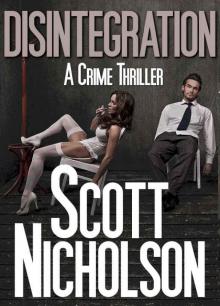 Disintegration: A Mystery Thriller
Disintegration: A Mystery Thriller The Gorge: The Screenplay
The Gorge: The Screenplay The Vampire Club
The Vampire Club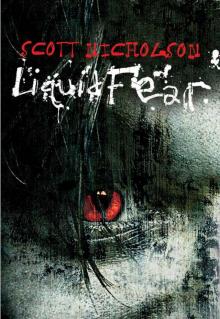 Liquid fear f-1
Liquid fear f-1 Ghost College (Supernatural Selection #1)
Ghost College (Supernatural Selection #1)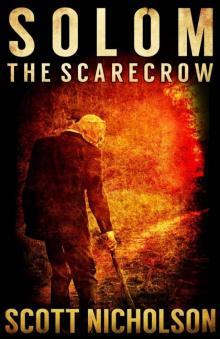 The Scarecrow: A Supernatural Thriller (Solom)
The Scarecrow: A Supernatural Thriller (Solom)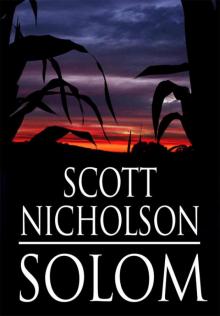 Solom
Solom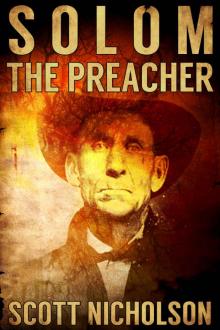 The Preacher: A Supernatural Thriller (Solom Book 3)
The Preacher: A Supernatural Thriller (Solom Book 3)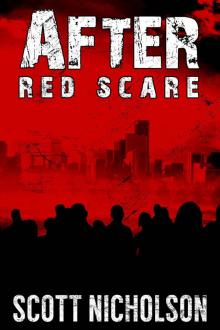 After: Red Scare (AFTER post-apocalyptic series, Book 5)
After: Red Scare (AFTER post-apocalyptic series, Book 5) The Farm
The Farm Ashes
Ashes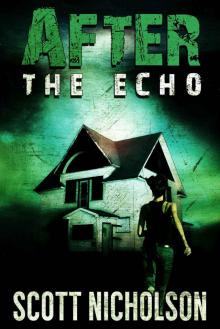 After: The Echo (AFTER post-apocalyptic series, Book 2)
After: The Echo (AFTER post-apocalyptic series, Book 2) The Harvest
The Harvest Ghost Box: Six Supernatural Thrillers
Ghost Box: Six Supernatural Thrillers